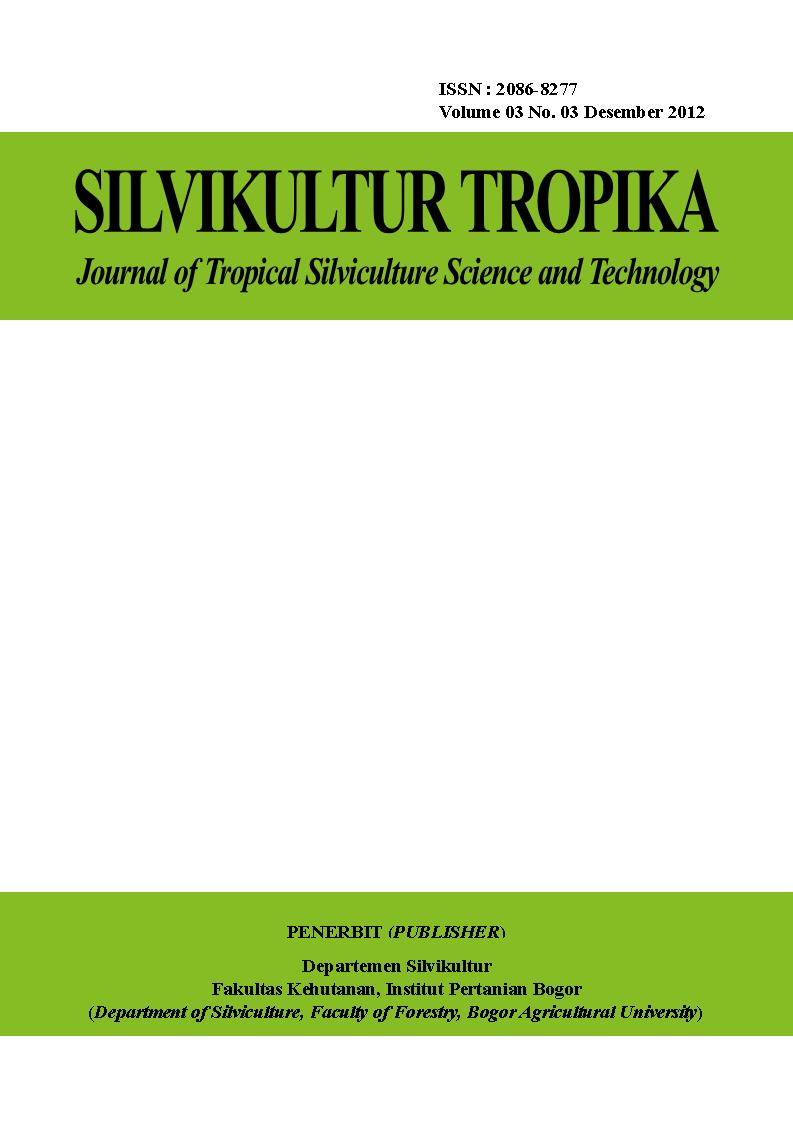Dimension and Rooting System of Sentang (Melia excelsa Jack) in Agroforestry Area
Abstract
Agroforestry was had two main components, those are forestry plant and agricultural plant. Plant species which developed in agroforestry area was been expected to give benefits to communities, those are multifunction characteristic and commercial value. One of potential plant to be developed in agroforestry area was Sentang. The objective of this research was to know the effect of agroforestry to the dimension and rooting system of Sentang. This research used Randomized Complete Block Design (RCBD) two factorials with six treatments; those are sweet sorghum in planting space 2.5 x 25 m, sweet sorghum in planting space 2.5 x 5 m, grain sorghum in planting space 2.5 x 2.5 m, grain sorghum in planting space 2.5 x 5 m, no sorghum in planting space 2.5 x 25 m and no sorghum in planting space 2.5 x 5 m. Those six treatments were located in three blocks; those are block 1, block 2 and block 3.
Plant dimension (bottom diameter, diameter on breast height, total height, branch-free height, crown height, crown length, crown width) has an approximately same result for each variable. Research results show that best plant dimension was obtained in treatment of sweet sorghum and grain sorghum in both of planting space.
Rooting system was had different result for each variable. The shortest horizontal root length towards planting line was found in treatment of no sorghum in planting space 2.5 x 2.5 m; while the deepest root was found in treatment of sweet sorghum in planting space 2.5 x 2.5 m. The shortest upright root length towards planting line was found in treatment of no sorghum in planting space 2.5 x 5 m; while the deepest root was found in treatment of grain sorghum in planting space 2.5 x 5 m.










